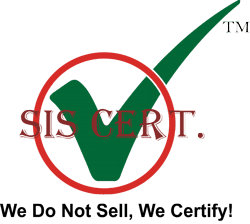ISO 14971 Certification
Home » ISO 14971 Certification
What is ISO 14971 Certification?
ISO 14971 is an ISO standard for the machine of hazard management to medical devices. The ISO Technical Committee at risk for the upkeep of this standard is ISO/TC 210 working with IEC/SC62A through Joint working gathering one (JWG1). This standard establishes the wants for risk management to work out the security of a medical device by the manufacturer during the merchandise life cycle. Such activity is required by higher level regulation and other quality management system standards like ISO 13485.
In particular, ISO 14971 might be a nine-section standard which initially sets up a structure for hazard analysis, assessment, control, and survey, and furthermore determines a system for audit and checking during creation and after creation.
ISO 14971 was grown mutually by Technical Committees ISO/TC 2101), Quality administration and comparing general angles for medical devices, and IEC/TC 62, Electrical gear by and by, of the International Electro technical Commission (IEC), with the dynamic association of the numerous controllers from round the world. It are often purchased from your national ISO member or through the ISO Store.
In 2000, the primary edition of ISO 14971 was released because the international standard for risk management of medical devices. This year, the ISO technical committee (ISO/TC 210) has been working diligently refreshing this comprehensively perceived standard. And while the elemental stages of the danger management process remain unchanged, there are some key modifications that medical device manufacturers should remember of to make sure that they will successfully navigate the event , testing, and launching of latest products within the coming years.
The most significant revisions include the following:
• Three new definitions are being introduced (benefit, reasonably foreseeable misuse & state of the art)
• Benefit-risk analysis is being refocused to align the concept with terminology utilized in other major regulations, like the EU MDR
• Additional emphasis on the scope of the ISO 14971-risk management process; for instance , all risks related to a medical device, starting from electrical to usability and data security
• More emphasis is being placed on the importance of risk management planning by explicitly requiring that proper execution of the plan is verified during risk management review
• Risk management plans must define the methods and criteria wont to evaluate acceptability of the general residual risk.
• The various requirements to disclose certain residual risks are being merged into one requirement as a part of the “Evaluation of overall residual risk”.
• Risk management requirements for proactive production and process-based post-production activities are elaborated upon and restructured.
The third version of ISO 14971 was at long last discharged in December 2019 and it replaces ISO 14971:2007.
Overall, no tectonic shifts have occurred – the danger management process itself remains largely unchanged. Nonetheless, there are important clarifications and updates in ISO 14971:2019 that you simply should remember of. In reviewing the new ISO 14971 standard, pay particular attention to the highlighted sections below. One big change – . Annex B of the quality contains a useful guide for comparing clauses within the second and third editions.
Three important definitions are added to the new ISO 14971:2019 standard and are noted below.
Other minor changes were made to the subsequent terms: accompanying documentation, harm, IVD, manufacturer, and use error. make certain to review those.
• Reasonably foreseeable misuse (3.15) – The new definition states that if misuse of a product may result from “predictable human behavior” then you would like to require this under consideration in your risk analysis. “Reasonably foreseeable” are often unintentional or intentional and includes those “why -in-the-world would-someone-do-that” scenarios. This analysis applies to get users and professional users.
• Benefit (see 3.2) – It’s not surprising that a typical focused on risk would neglect to define “benefits.” This term wasn’t defined in ISO 14971:2007 or EN ISO 14971:2012, but it’s addressed within the third edition. The definition now aligns with terminology utilized in many regulations. See more on this below.
• State of the art (3.28) – This perplexing term appears 12 times within the EU MDR and 20 times within the IVDR but isn’t defined in either regulation! ISO 14971:2019 helps settle the issue by obtaining the recently stamped definition found in ISO/IEC Guide 63:2019.
That guide defines state of the art as: “Developed stage of technical capability at a given time as regards products, processes and services, supported the relevant consolidated findings of science, advancement and data.” in that particular condition, ISO 14971:2019 might be considered the “forefront” whenever it incorporates chance organization for medical devices.
Benefits of Implementing ISO 14971:
- Implement ideal methods of reducing risk for all stakeholder.
- Develop devices and therapies that are proven effective within the industry.
- Manage speed and price to plug.
- Optimize speed of iteration.
- Streamline the regulatory process which will enable entry to chose markets
